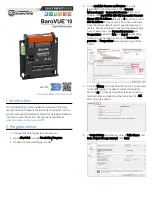
PILOT’S
GUIDE
50
STRIKE FINDER
DIGITAL WEATHER AVOIDANCE
Table 4. Strike Finder/Radar, Comparison
Attenuation
Attenuation is a non-obvious radar problem, created by the very process
it uses to measure precipitation density. Moisture in close proximity to the
aircraft will scatter the radar beam, thereby depleting the energy return to
the radar receiver.The same effect is found with car headlights when driving
in heavy fog. The light reflected back off the fog is defused or softened,
thereby reducing the visible distance.
This problem, called attenuation affects all radar, meaning heavy rain
areas could scatter, or worse, totally block out the radar return from
hazardous weather ahead,
(see Figure 40, p.48)
.
A wet windshield means a wet radome. Moisture and ice on the radome
will diminish the radar signal. In heavy rain it is not unusual for the energy
loss to reduce the reception distance of radar to less than several miles.
Limited Antenna
Radar has a limited field of view. The radar’s
antenna must be tilted to assure the radar beam
is directed into weather, and scans only 60-to-120-
degrees of perspective. The effective radar return
is about 100 miles. Radar is ineffective before
takeoff: The radar
antenna
cannot be elevated to
any effective level from the ground, and in-flight radar loses effectiveness
as the aircraft descends.
Airborne
Radar
200 nm
100 nm
360˚
90 - 120˚
Lightning
Water
Automatic
Manual
Gain Controll
Detects All
Manual
Tilt Controll
Strike Finder
®
Range
Field of View
Detects
Sensitivity
to Storm Severity
Sensitivity
to Storm Height
Strike Finder
®
Radar
Strike Finder Pilot's Guide fix 9/19/05 10:59 AM Page BC
















































